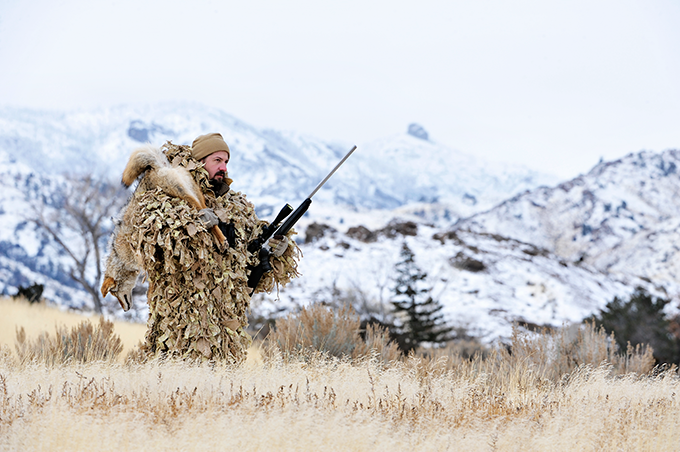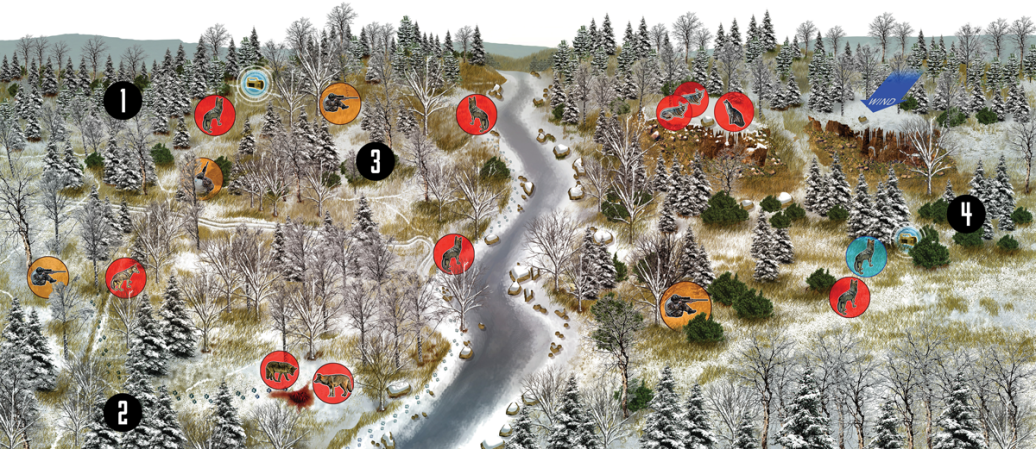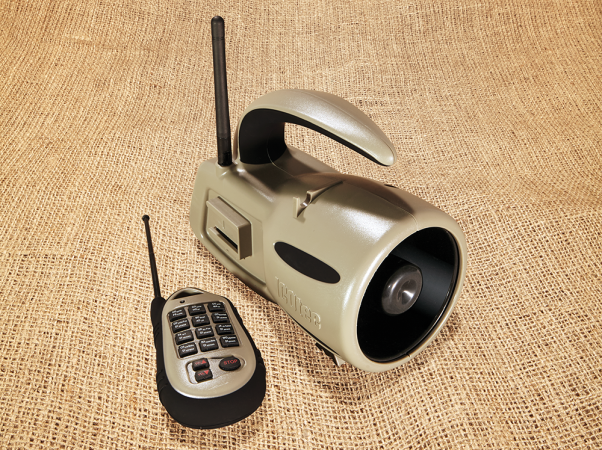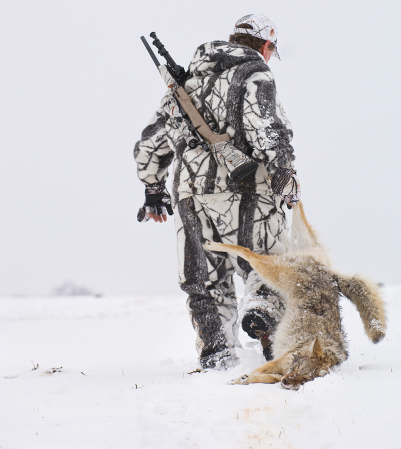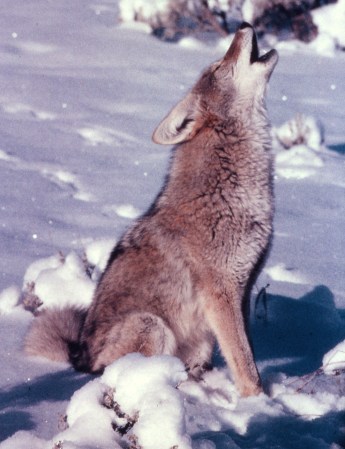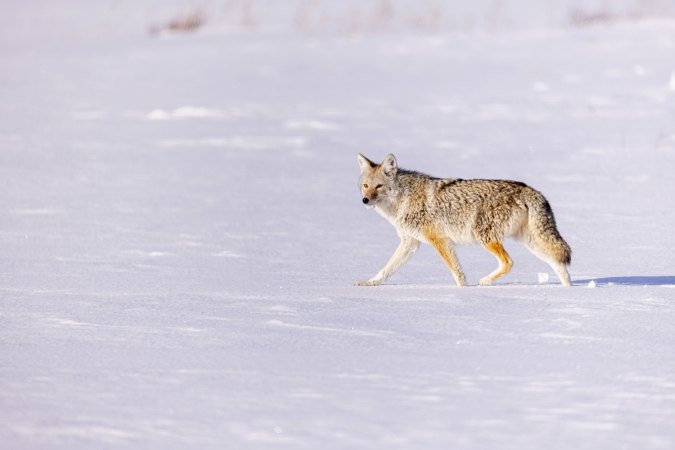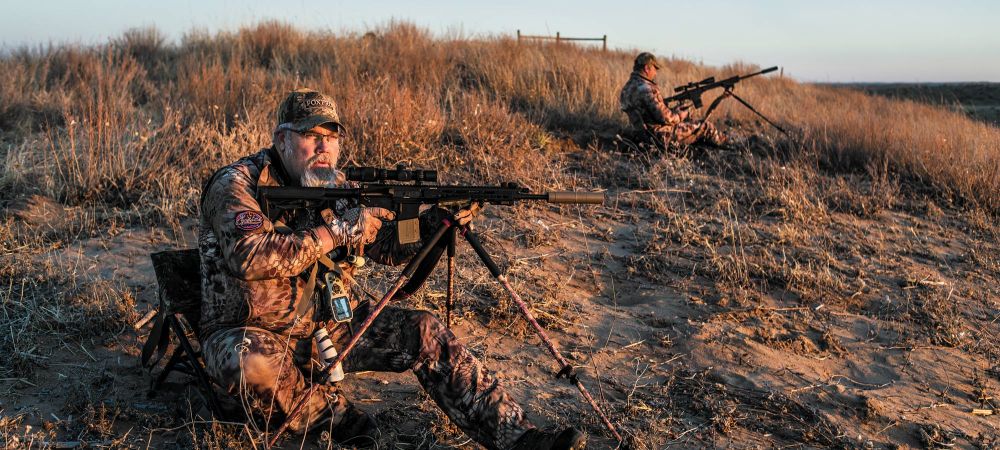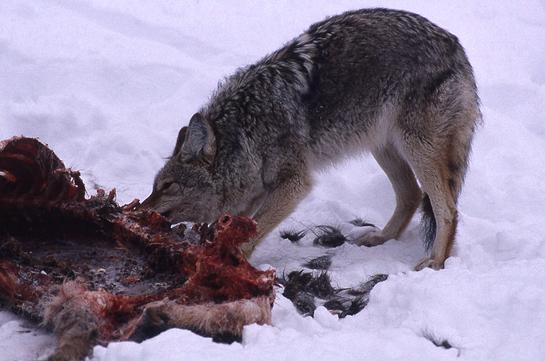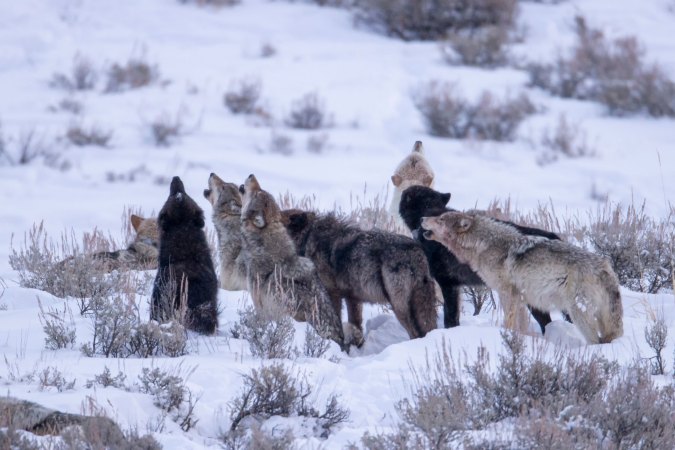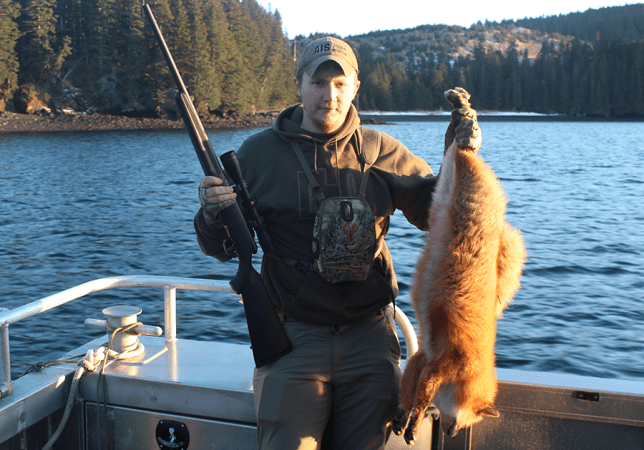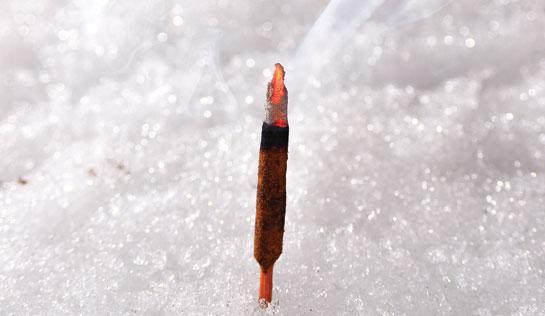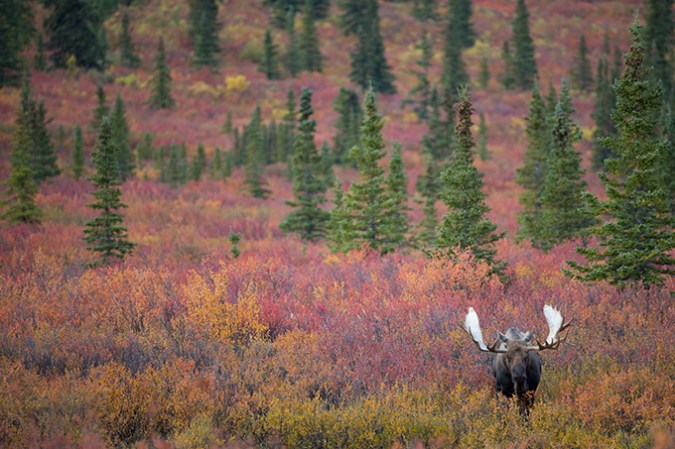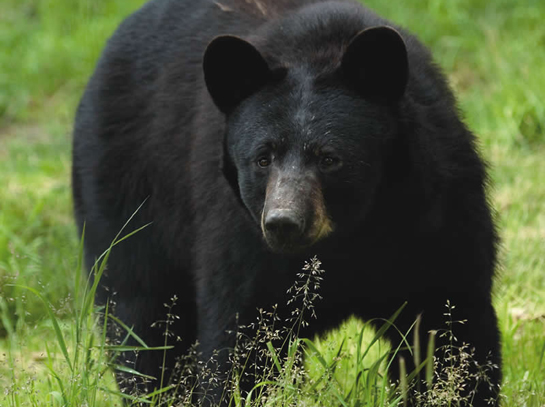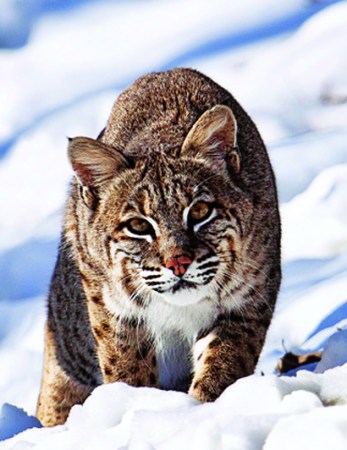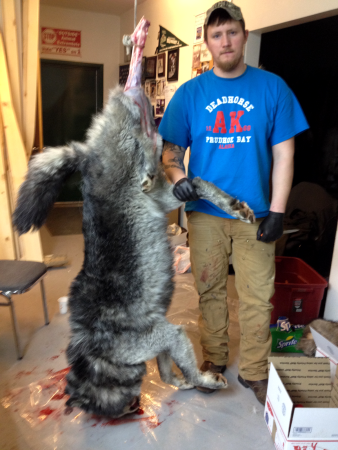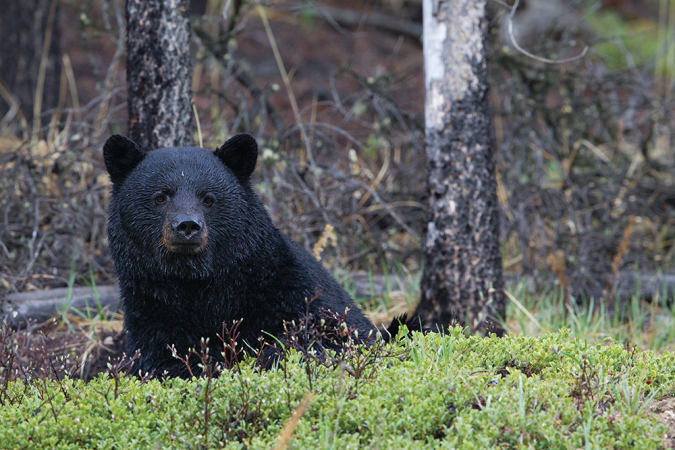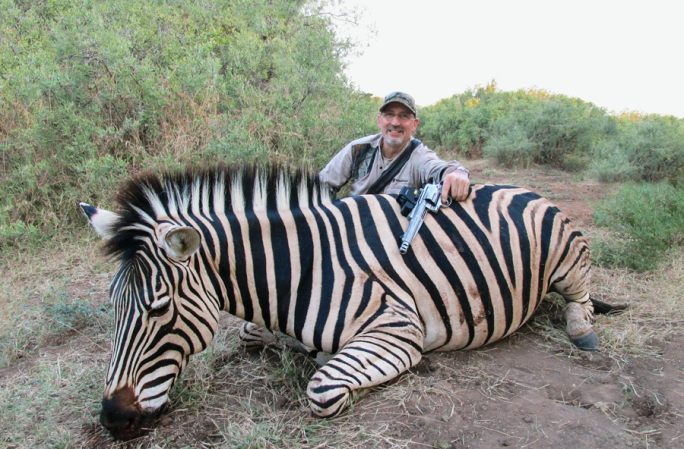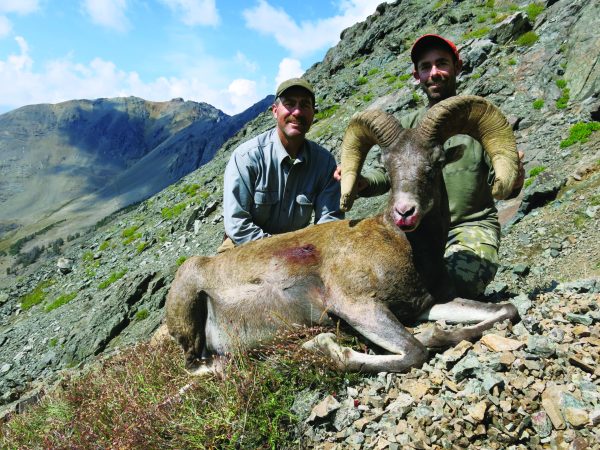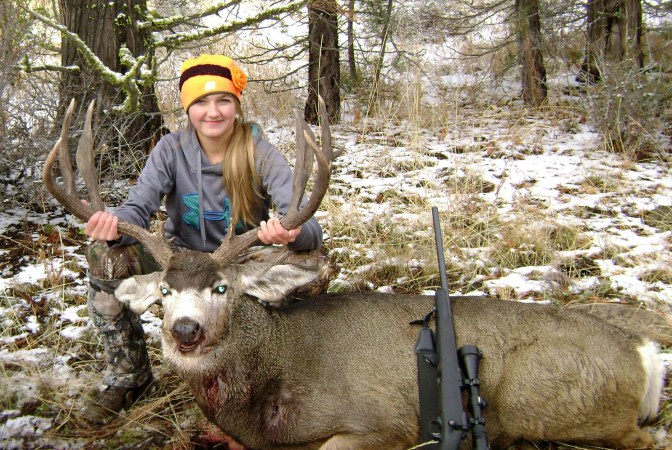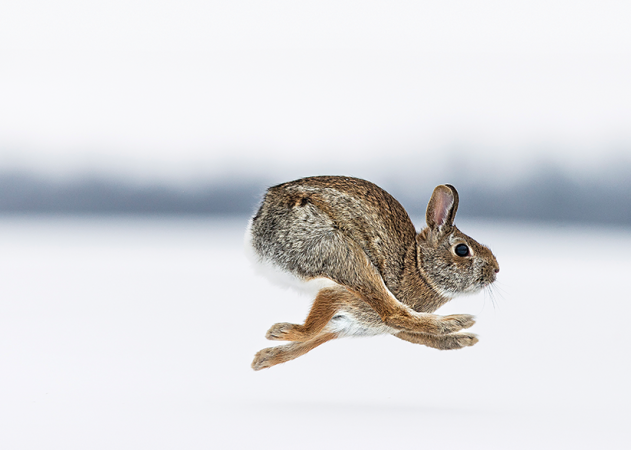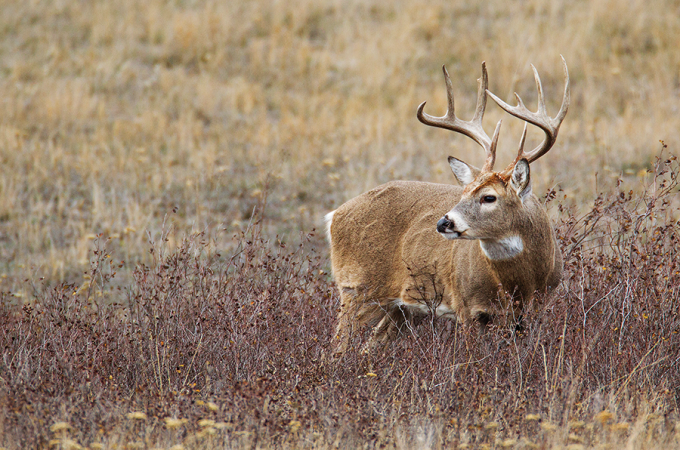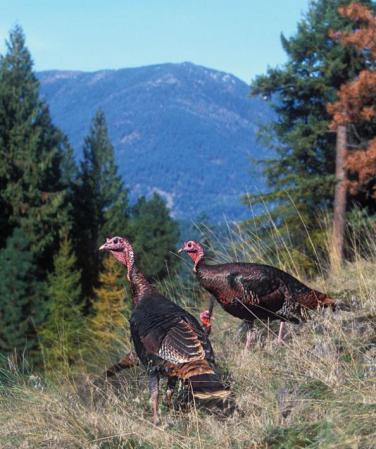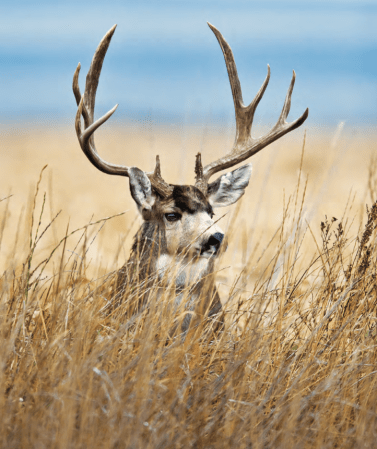It was a lovely day for a stroll: sunny, a light breeze, and a brisk 10 degrees Fahrenheit. Doc said walking was great exercise, so I grabbed my Weatherby and headed east on the lip of a badlands wall.
I wasn’t alone. Coyote tracks punched through fresh snow. Exactly the company I wanted. The tracks led to a shallow, grassy swale, then down a defile that was steep, but not so steep that a coyote couldn’t ride the light snow 200 feet to the bottom, which is where I spotted him, about a half mile out on the flat. He looked hungry. I lay down in the snow on the lip of that bluff, the 7mm Remington Magnum barrel pointed over the edge, and cried like a hawk-caught jackrabbit. The coyote came running, riding the north wind right into range.
My heart ran, too, but I had several seconds to breathe deep and calm myself. There was no rush. He could not smell me, and I had a perfect rest. My only job was to remain calm and ease off the shot. When the coyote stopped at 200 yards, I held the crosshair low on his chest and launched the 150-grain Ballistic Tip.
Before I found a chute that I could use to slide safely off the rim to retrieve that coyote, I spotted another one sleeping atop a grassy bench just below the rim. Now I had two to carry up. Then a third came trotting out of the sun, right on the rim and practically into my lap. By 10 a.m. I’d improved my cardiovascular health and made a day’s wages in fur.
Ridge Reaping
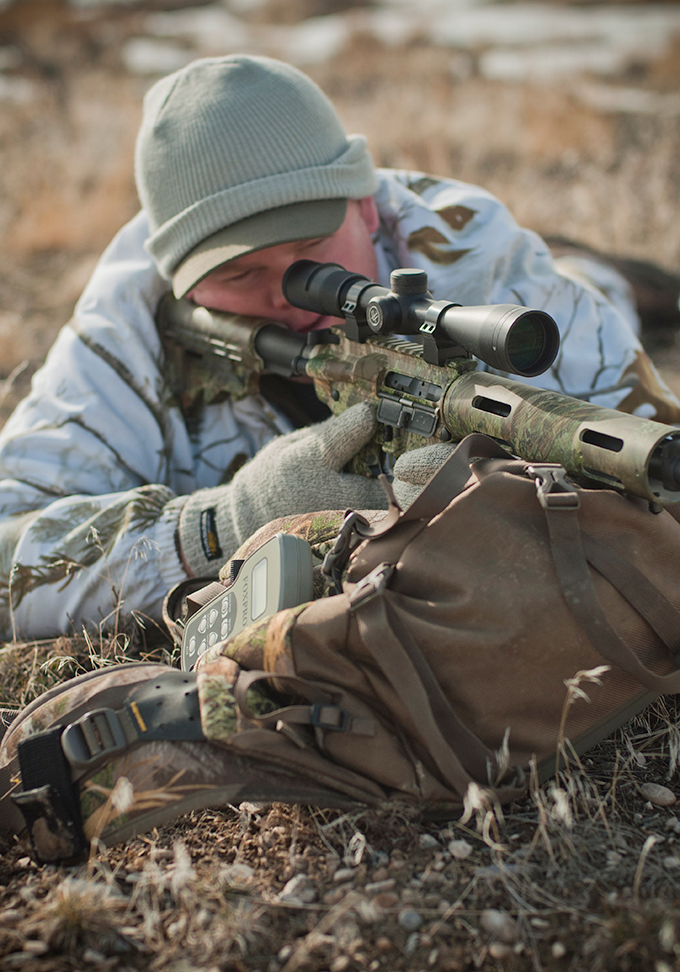
Walking up coyotes isn’t the hottest tactic in the hunting playbook, but it’s a good strategy when any high ridge provides a long view of distant bottoms. The West is full of these badlands, river bluffs, and hogbacks tapering off mountains. Coyotes run the rabbit-rich river bottoms all night, then hunt their way uphill to bed on or near the ridgetop. Hike, snowshoe, or ski along the ridgetops silently, watching and glassing, and you can usually find two to four in a full day. My record is seven.
This approach isn’t limited to the West. You can apply it in the open prairies of the Great Plains and even the hardwood draws of the Midwest. You do need visibility to hunt ridges to best effect, for anywhere there is cover, coyotes will use it to hide their approach.
When glass-and-stalk hunting like this, I reserve calling for dogs I can’t stalk to within 300 yards of. Often a mouse squeak is sufficient to bring them running. If that doesn’t work, I crank the volume up gradually with high-pitched rabbit screams. Some days they seem to hear a lower-pitched jackrabbit or fawn bleat better. Offer the full menu and let them choose. The sound isn’t as important as the location. When you’re calling from the direction they’re already heading, they will turn on the afterburner.
Finding Dogs
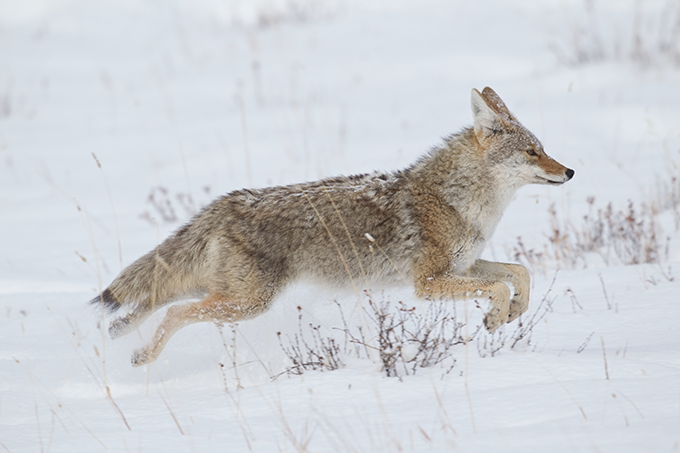
Once you’ve found good coyote country, get the latest intelligence on the dogs’ locations one of two ways: About an hour before dawn, howl from roads or trails and use triangulation to zero in on areas where you get the most replies. The other approach is covering plenty of ground and hunting for sign. Following a light overnight snow, drive rural roads with eyes peeled for fresh tracks. Coyotes often follow roads and trails for miles because the going is easy. When you see their spoor peel off into pastures, consider where they might be going and how you might get ahead of them.
Across much of the Midwest, country roads are laid out in square-mile grids, making it easy to determine if a coyote is still inside the section. If you see tracks going in, drive around the square, and if they don’t come out, sneak into a good calling location with the wind in your favor and reap the rewards.
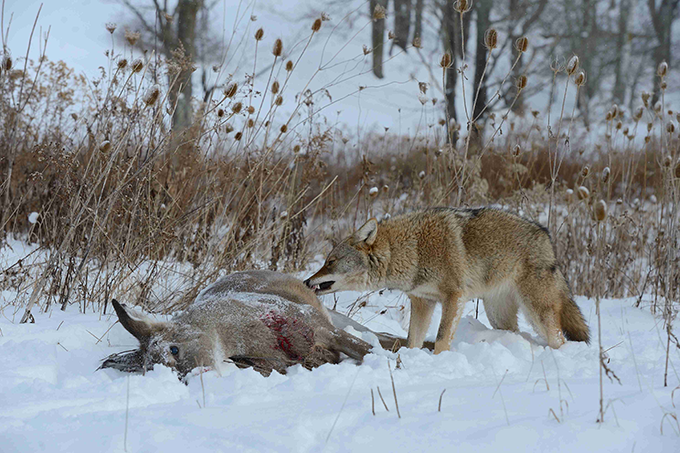
If tracks lead into good bedding cover (tall-grass fields, broken hills and coulees, pockets of brush), assume they’ll hole up there for several hours. Take your time, set up right, and lure them out. And always call as far from busy roads as possible. A coyote hesitant to expose himself to road traffic in broad daylight may readily lope across an empty pasture far from regular human activity.
In agricultural areas, coyotes like to keep to cover when stalking their prey. Try to give them a weedy draw, brushy fence line, or pocket of woods to travel en route to their demise. Don’t expect them to race brazenly across an open field.
Tag-Teaming
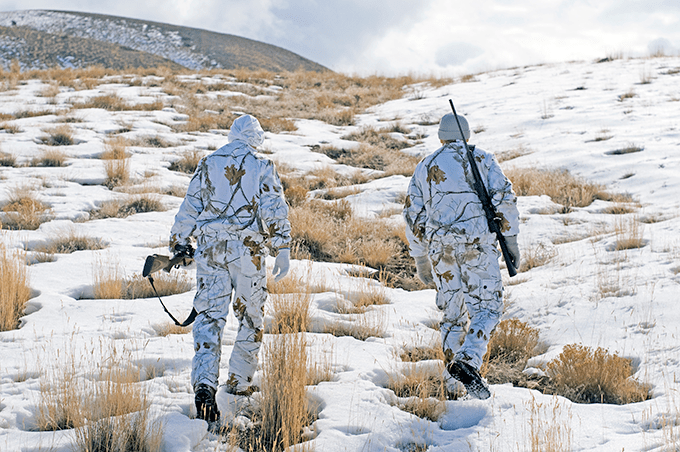
Wind and terrain can be friend or enemy to a coyote caller, depending on how you use them. But two hunters can use them better than one. Generally, a cautious coyote will begin circling the sound of a dying bunny at about 200 yards out. If that 200-yard buffer happens to be in a ditch, behind a low rise, or under cover of vegetation, your prospective fur could walk within easy shooting range, smell you, and sneak away without your ever having glimpsed him. Don’t give him that chance.

Instead, split up. While the caller perches where he can see into the wind or across it, his wingman should set up about 200 yards downwind, especially if he can see dips, holes, ditches, and cover the caller can’t. Wear the usual effective camo, sit still, and keep your eyes open. The wingman must actually be better hidden and more still than the caller because although coyotes expect to see something moving near the sound of crying prey, they don’t expect to see anything 200 yards downwind. So choose this waiting position carefully.
Get comfortable, with your gun in the shooting sticks and leveled toward the likely area of approach. Pull on gloves, a cap, and a face mask, and be prepared to shift nothing but your eyeballs for up to a half hour.
Be sure you both know exactly where the other is at all times. Set safe shooting zones and stick to them. Ideally, text or call one another before each calling session begins and when it ends. Ideally, that final call will be to tell your buddy about the ’yote you just dropped.
Setup for a Dead-On Hold
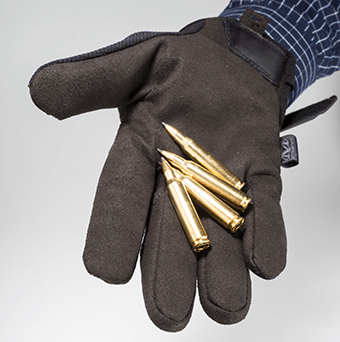
With most hot .22 and .24 centerfires, you can adjust your scope setting so a center-chest hold will bring home the fur at any distance from 10 feet to about 300 yards. That covers 90 percent of all coyote encounters and negates the need for a a laser rangefinder.
Stick with the highest ballistic coefficient bullet your rig shoots accurately, usually the heaviest boattail spire point in a given caliber. Figure
40- to 45-grain in .204 Ruger, 55- to 60-grain
in .22/250 and .223 Rem., 90- to 100-grain in
.243 Win., and so on.
Zero so bullets hit about 1.5 inches high at 200 yards. Then shoot at 150-yard, 200-yard, 250-yard, and 300-yard paper targets and see where those bullets print. Your bullet should strike no more than about 2.25 inches high at about 150 yards and drop no more than 3 inches low out to about 280 or 300 yards.
A coyote’s vital zone, from the back line down to the brisket, is about 8 inches tall. Aim for the center and you have 4 inches of vital zone both above and below. A dead-on hold to that maximum distance is your point-blank range. Use it.
